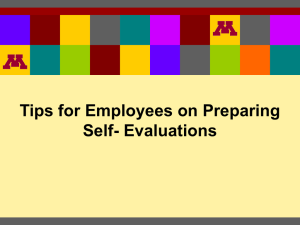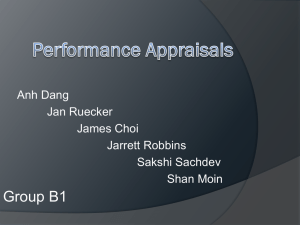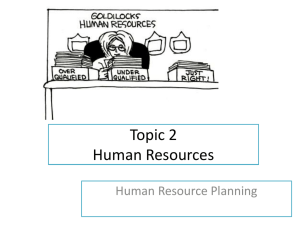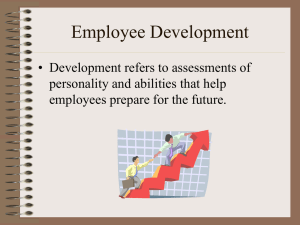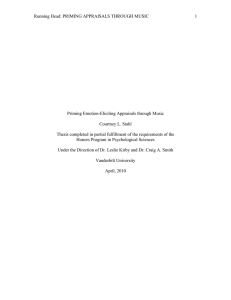Fine tune Performance Appraisals to Make Them Effective—and Less Arduous
advertisement
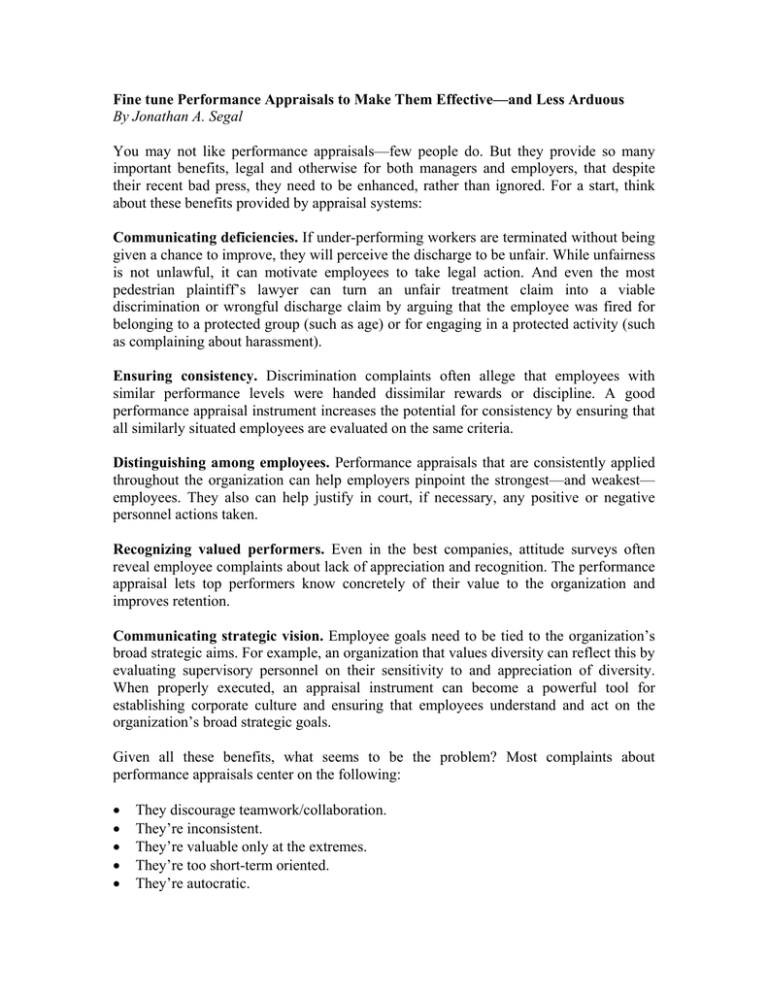
Fine tune Performance Appraisals to Make Them Effective—and Less Arduous By Jonathan A. Segal You may not like performance appraisals—few people do. But they provide so many important benefits, legal and otherwise for both managers and employers, that despite their recent bad press, they need to be enhanced, rather than ignored. For a start, think about these benefits provided by appraisal systems: Communicating deficiencies. If under-performing workers are terminated without being given a chance to improve, they will perceive the discharge to be unfair. While unfairness is not unlawful, it can motivate employees to take legal action. And even the most pedestrian plaintiff’s lawyer can turn an unfair treatment claim into a viable discrimination or wrongful discharge claim by arguing that the employee was fired for belonging to a protected group (such as age) or for engaging in a protected activity (such as complaining about harassment). Ensuring consistency. Discrimination complaints often allege that employees with similar performance levels were handed dissimilar rewards or discipline. A good performance appraisal instrument increases the potential for consistency by ensuring that all similarly situated employees are evaluated on the same criteria. Distinguishing among employees. Performance appraisals that are consistently applied throughout the organization can help employers pinpoint the strongest—and weakest— employees. They also can help justify in court, if necessary, any positive or negative personnel actions taken. Recognizing valued performers. Even in the best companies, attitude surveys often reveal employee complaints about lack of appreciation and recognition. The performance appraisal lets top performers know concretely of their value to the organization and improves retention. Communicating strategic vision. Employee goals need to be tied to the organization’s broad strategic aims. For example, an organization that values diversity can reflect this by evaluating supervisory personnel on their sensitivity to and appreciation of diversity. When properly executed, an appraisal instrument can become a powerful tool for establishing corporate culture and ensuring that employees understand and act on the organization’s broad strategic goals. Given all these benefits, what seems to be the problem? Most complaints about performance appraisals center on the following: • • • • • They discourage teamwork/collaboration. They’re inconsistent. They’re valuable only at the extremes. They’re too short-term oriented. They’re autocratic. • • They’re too subjective. They produce emotional anguish. These complaints can be valid, but they also can be remedied. For example, if collaboration is essential, make it a criterion on which employees are evaluated. Appraisals that focus on—and reward—collaborative behavior will encourage teamwork. Conversely, appraisals that punish employees for working contrary to the team, such as withholding information, discourage anti-collaborative behaviors. Here are some solutions to other “problems” with performance appraisals. Problem: Inconsistency. Solution: When managers are planning a negative ranking, they should ask themselves: “Does any other employee whom I supervise have the same or a similar deficiency?” If so, the employee in the current situation should receive the same or a similar ranking. It also helps to evaluate all employees at the same time each year (as opposed to throughout the year on employees’ anniversary dates). This makes it more likely that you will apply the same criteria or factors. Problem: Valuable only at the extremes. Solution: Include a question that compares performance, such as “Is the employee’s overall performance generally stronger than, the same as or weaker than others performing the same or similar tasks?” This question can be particularly useful when you are asked to rank all subordinates on whether they are “meeting expectations” because you can assign a loose ranking to employees who are performing satisfactorily but to different degrees. Problem: Short-term orientation. Solution: Include both short-term and long-term goals for decision makers. Those who excel at one but not the other are not meeting expectations. To minimize legal risk, when discussing long-range plans, always focus on the company, the department or the product line—not the employee. For example, it is legally safer to say, “How should this process work in three years?” rather than “How will you be running this process in three years?” Also, the appraisal process should be dovetailed with the compensation program to encourage employees to seek more than short-term goals. Problem: Autocratic. Solution: Make sure the appraisal is not one-sided by asking employees for their comments on their appraisals. This also helps managers understand how employees perceive themselves. Don’t limit employee comments to written form. If the process is interactive, employees are more likely to understand their evaluations and you are more likely to understand their perception of their limitations. Problem: Too subjective. Solution: Measure achievement in terms of specific behaviors, rather than general personality traits, to increase objectivity. For example, if adaptability is essential to the job, look for specific behaviors that either confirm or contradict the employee’s ability to deal with ambiguity, shift gears quickly, see the big picture quickly, make decisions without “perfect” information and value diverse ways of handling problems. Problem: Emotional anguish. Solution: First, minimize emotional anguish by conducting reviews on time. The longer employees wait for a review, the more anxious they become. And deliver criticism in a constructive, non-punitive way. And to the extent that appraisals create anguish in those that don’t meet expectations, that’s not a bad thing. It may stimulate them to leave on their own initiative. And employees who leave on their own are less likely to sue. Jonathan A. Segal, Esq., is a partner in the Employment Services Group of Wolf, Block, Schorr and Solis-Cohen LLP, a Philadelphia-based law firm. His practice concentrates on counseling clients, developing policies and strategic plans, and training managers to avoid litigation and unionization. @2001 Society for Human Resource Management. Members of SHRM are authorized to distribute copies, excerpts or e-mails of this information for educational purposes internally within their organizations. No other republication or external use is allowed without permission of SHRM. The information is not intended to serve as a substitute for legal advice.
